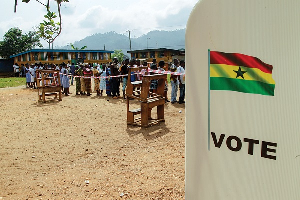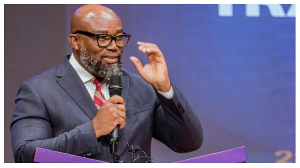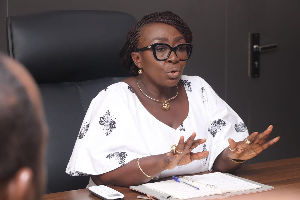Ghana’s December 7 2024 general election is set to be a significant political event as the country prepares to elect a new president and members of parliament.
The ninth general election of the fourth republic, this year’s election is expected to be highly contested, with the incumbent government, led by the Vice President, Dr Mahmoud Bawumia, as their flagbearer, aiming to ‘break the eight’, a fourth republican defacto tradition where incumbent governments are voted out after serving two terms of four years.
On the other hand, the opposition National Democratic Congress (NDC) and its flagbearer and former President, John Dramani Mahama, are looking to ‘deliver’ Ghanaians from over seven years of hardships which has culminated in an economic crisis and an International Monetary Fund (IMF) bailout.
Already, several concerns have been raised about the electoral process. IMANI Ghana, a prominent think tank, has on several occasions expressed worry about the Electoral Commission’s transparency in its operations and decision-making processes, problems with the voter registration process, communication and engagement and procurement and spending, among others.
The deployment of weaponised disinformation and misinformation by supporters of the two main political parties and the media’s preparedness to perform its mandate ahead of the elections, particularly with the threat of disinformation and misinformation, has also been a subject of concern.
Globally, disinformation (the deliberate creation and dissemination of false information) and misinformation (unintentional circulation of false information) are identified as a challenge, especially during periods of tension and uncertainty.
It is no surprise to observers that the World Economic Forum, in their 2024 Global Risks Report, declared misinformation a top societal threat, warning that misinformation and disinformation may ‘radically disrupt electoral processes in several economies over the next two years.’ This prediction is supported by a UNESCO research, which found that citizens were concerned about the prevalence and danger of false information in their countries ahead of scheduled elections.
The 2023 study of Internet users in Ghana and 15 other countries slated to go to the polls this year on the impact of online disinformation and hate speech found that citizens perceive the issue of disinformation as a real threat.
Eighty-seven per cent of participants (87%) believe that this phenomenon has already had a significant impact on the political life in their country. The same proportion of participants (87 per cent) are worried about the effects of disinformation on the upcoming elections in their country.
While a majority of participants of the research and respondents of similar previous research say they rely on social media for information (56 percent of UNESCO’s survey reported relying on social media), traditional media, particularly television, are the most trusted sources of information in terms of their credibility and quality during elections. Therefore, Ghanaians have a lot of expectations of traditional media, that is, radio, television, and print media, going into the polls.
The media is expected to ‘uphold the responsibility and accountability of the Government to the people of Ghana’ per Chapter 12 of the 1992 Constitution, bearing in mind that as media experts Bill Kovach and Tom Rosenstiel have said, “the central purpose of journalism is to provide citizens with accurate and reliable information they need to function in a free society.”
Indeed, the Ghanaian media has played this role quite well over the years; history is replete with the significant accomplishments of the media pre-independence, through independence, and periods of political unrest to date. However, the changing ecosystem, marked by technological advancements and its fallouts, including, as previously mentioned, disinformation and misinformation, presents the media with challenges that necessitate a reimagination of its responsibilities and processes.
To do this, the media needs to know its place and role in the information disorder (encompassing misinformation, disinformation and malinformation) space and proactively support efforts at addressing same.
The media can be creators and disseminators of information disorder and, at the same time, the targets of information disorder.
Media as a creator and disseminator of information disorder: There is ample evidence of ‘media organisations’ set up purposely to push political agendas and who do not care about achieving their objectives through nefarious and dubious means. Sadly, there is also evidence of media organisations, legacy media, who have spread disinformation and misinformation because they failed to do due diligence.
The Chef Smith Guinness World Record claim, reported by major newsrooms without proper verification, is an example. Such mistakes, should one call them that, cast in doubt the media’s preparedness for the December 7 elections and in performing their role effectively.
Media as a target of information disorder: ‘Bad actors’, as disinformation experts call them, are aware of the power of traditional media, knowing the large following and audience legacy media has. Therefore, they deliberately target and manipulate legacy media to amplify false information and narratives.
So yes, Dr UN and Chef Smith hit the jackpot when radio, television and online outlets platformed them. There are also instances where traditional media and other influential figures are impersonated as the originators of often proven false information — this is what Claire Wardle of First Draft calls imposter content. Already, several newsrooms have been impersonated to spread false election-related information disorder.
While this may be to leverage their popularity to ‘sell’ their message, bad actors may also use this to discredit the work of such figures or harm their reputation.
When targeted, the media’s response has often been to stamp ‘fake news’ across such content. However, while labelling false information can change perceptions, beliefs, and behaviours, it may not be good enough. Such warnings can easily be misunderstood (what about the visual is fake?) or ignored.
There is no silver bullet or hypodermic needle approach to addressing information disorder in the media and faced by the media. However, best practices require that media organisations take a proactive approach to the problem and ensure they have in-house policies they can fall on when targeted by false information peddlers.
Such policies may include:
Assessing and monitoring the spread of the content before responding: As Public Relations experts will advise, organisations should not be in haste to respond to everything. So, start by monitoring the spread of imposter content before responding. If you are not sure about the virality of the content, it may be wise to ignore it since you do not want to be used as an amplifier. Remember, you most likely have an audience/ followers bigger than the creator of the false information.
Educating the public about your brand: Audiences should know your newsroom’s ‘voice’. They should know your brand, the newsroom’s processes, and how stories are researched, verified, and published. Trust built through this level of transparency protects your audience and brand, as they most likely question suspicious information purporting to originate from a newsroom.
Transparent Communication: Have a clear communication strategy for addressing such situations. When you have to, issue a clear and factual statement addressing the information disorder. Avoid giving prominence to the false information and focus on your response. If you must use the ‘fake news’ stamp or label, it should be ‘large, assertive and disruptive’. Ensure additional context is provided by explaining why the information is false and providing evidence to support the correction.
Legal action: If the information disorder causes significant harm to your brand, consider legal action against those responsible, particularly if there are clear cases of defamation or malicious intent. This may serve as deterrence to others.
Opinions of Monday, 12 August 2024
Columnist: Caroline Anipah















